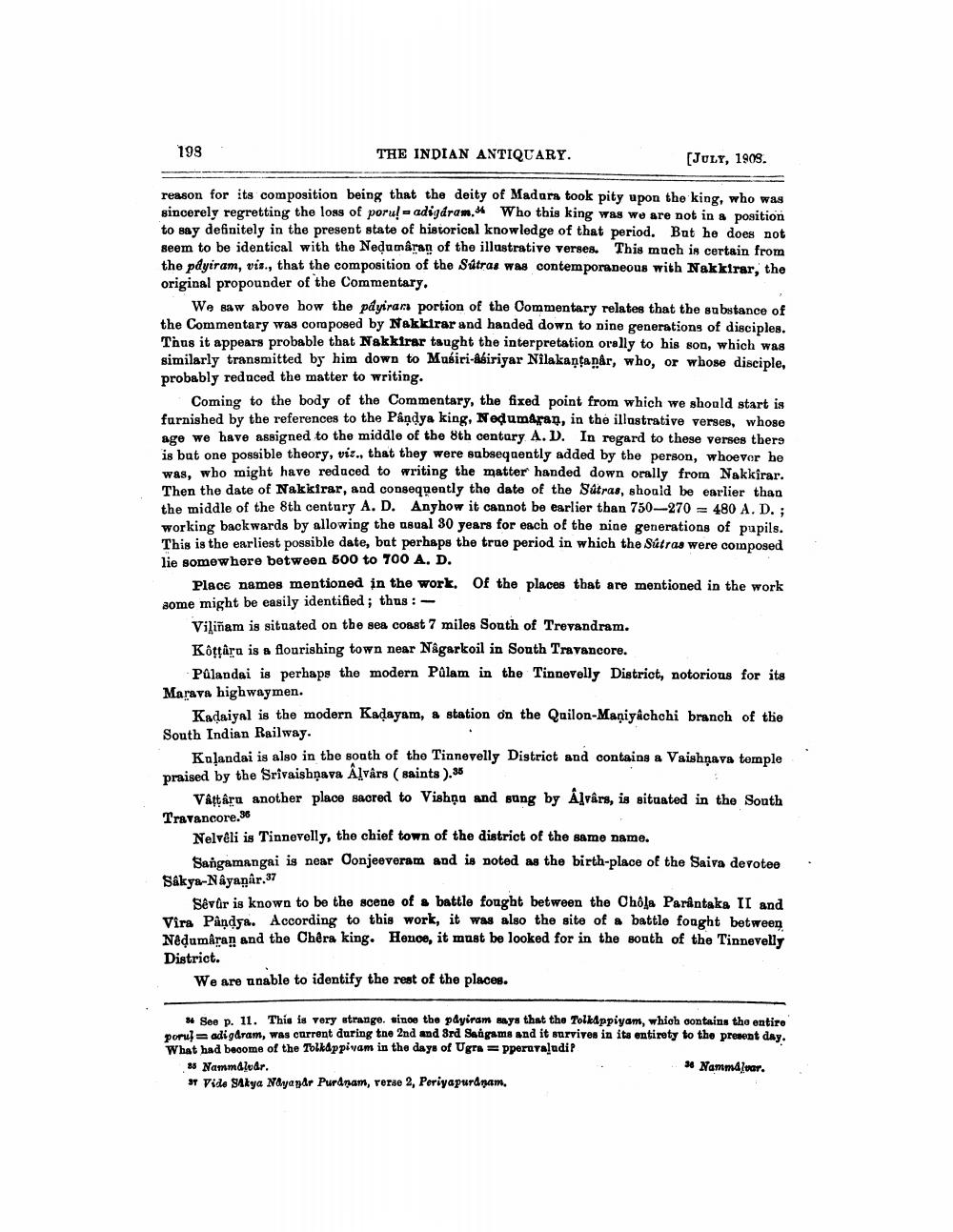________________
198
THE INDIAN ANTIQUARY.
(JULY, 1908.
reason for its composition being that the deity of Madurs took pity upon the king, who was sincerely regretting the loss of poru! - adigáram 4 Who this king was we are not in a position to say definitely in the present state of historical knowledge of that period. But he does not seem to be identical with the Nedumâran of the illustrative verses. This much is certain from the pdyiram, vis., that the composition of the Stras was contemporaneous with Nakkirar, the original propounder of the Commentary.
We saw above how the pdyirar portion of the Commentary relates that the substance of the Commentary was composed by Nakktrar and handed down to pine generations of disciples. Thus it appears probable that Nakkirar taught the interpretation orally to his son, which was similarly transmitted by him down to Musiri-biriyar Nilakantapär, who, or whose disciple, probably reduced the matter to writing.
Coming to the body of the Commentary, the fixed point from which we should start is furnished by the references to the Pandya king, Nedumaran, in the illustrative verges, whose uge we have assigned to the middle of the 8th centary A. D. In regard to these verses there is but one possible theory, viz., that they were subsequently added by the person, whoever be was, who might have reduced to writing the matter handed down orally from Nakkirar. Then the date of Nakkirar, and consequently the date of the Satras, should be earlier than the middle of the 8th century A. D. Anyhow it cannot be earlier than 750-270 = 480 A.D.; working backwards by allowing the usual 30 years for each of the nine generations of pupils. This is the earliest possible date, but perhaps the true period in which the Sútras were composed lie somewhere between 500 to 700 A. D.
Place names mentioned in the work. Of the places that are mentioned in the work aome might be easily identified; thus:
Viliñam is situated on the sea coast 7 miles South of Trovandram. Kottara is a flourishing town near Nagarkoil in South Travancore.
Palandai is perhaps the modern Pålam in the Tinnevelly District, notorious for its Marava highwaymen.
Kadaiyal is the modern Kadayam, a station on the Qailon-Maniyâchchi branch of the South Indian Railway.
Kulandai is also in the south of the Tinnevelly District and contains a Vaishnava temple praised by the Srivaishṇava Alvars saints ).38
Vaatara another place sacred to Vishộa and sung by Alvârs, is situated in the South Travancore 36
Nelveli is Tinnevelly, the chief town of the district of the same name.
Sangamangai is near Conjeeveram and is noted as the birth-place of the Saiva devotee Sákya-Nayanar.37
Sêvar is known to be the scene of a battle fought between the Chola Parintaks II and Vira Pånds. According to this work, it was also the site of a battle fought between Nedumaran and the Chêra king. Henoe, it must be looked for in the south of the Tinnevelly District.
We are unable to identify the rest of the places.
.
*See p. 11. This is very strange. since the payiram says that the Tolkappiyam, which contains the entire Dorul adiadram, was current during the 2nd and 3rd Saagams and it surviven in its entirety to the present day. What had become of the Tolkappivam in the days of Ugra =pper valudi? * Nammalvar.
* Nammduar. » Vide Sikya Nayaydr Purdnam, rerse 2, Periyapurdnan.




